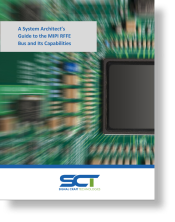A System Architect's Guide to the MIPI-RFFE BUS and Its Capabilities

With the proliferation of smartphones, smartwatches, and tablets in our society, instant and unhindered access to communication, information, and entertainment has become an expectation in our daily lives. Fast wireless network technologies such as LTE, WIFI, and Bluetooth have made it possible for numerous products and applications to maintain on-demand connections to the Internet virtually anywhere the consumer wants.
Emerging radio technologies such as 5G cellular and 802.11ax will push download speeds into the Gigabit-per-second range and latencies into single-digit milliseconds, but supporting these – as well as the full gamut of existing radio standards – ultimately results in highly complex radio architectures. For system engineers, overcoming these challenges is particularly important as their products will target consumers who demand the latest in wireless technology but are unwilling to on sacrifice product size, performance, or cost.
To address some of these market pressures, the MIPI RF Front-End Control Working group was formed to develop a highly efficient but flexible control interface capable of addressing current and future market needs. Working group membership consists of representatives from multitude of leading wireless industry companies.
This white paper discusses:
- MIPI RFFE Scope and Purpose
- Key Features of RFFE
- Enhance Data Throughput
- Simple 2-Wire Interface
- Slave Register Types
- Masked Write
- Flexibility and Extensibility
- Error Detection and Recovery
- Interrupt Capable Slaves
- Triggers
- Broadcast Messages
- Common Interface Voltage
- Electromagnetic Compatibility Optimization
- Multi-Master Support
- Evolution of the RFFE Standard
- Interfacing to MIPI RFFE Devices
Complete the form on the right to download white paper.
